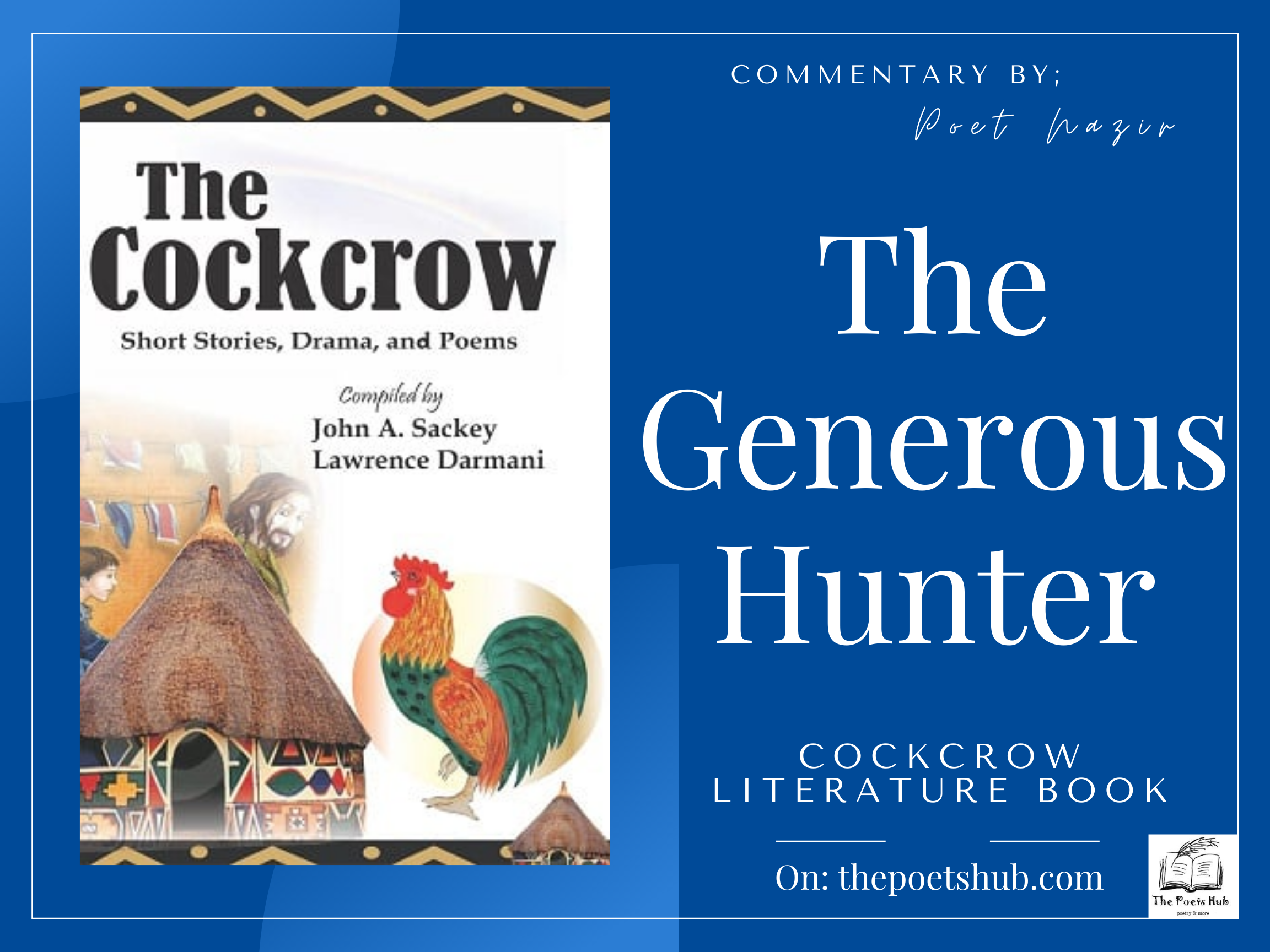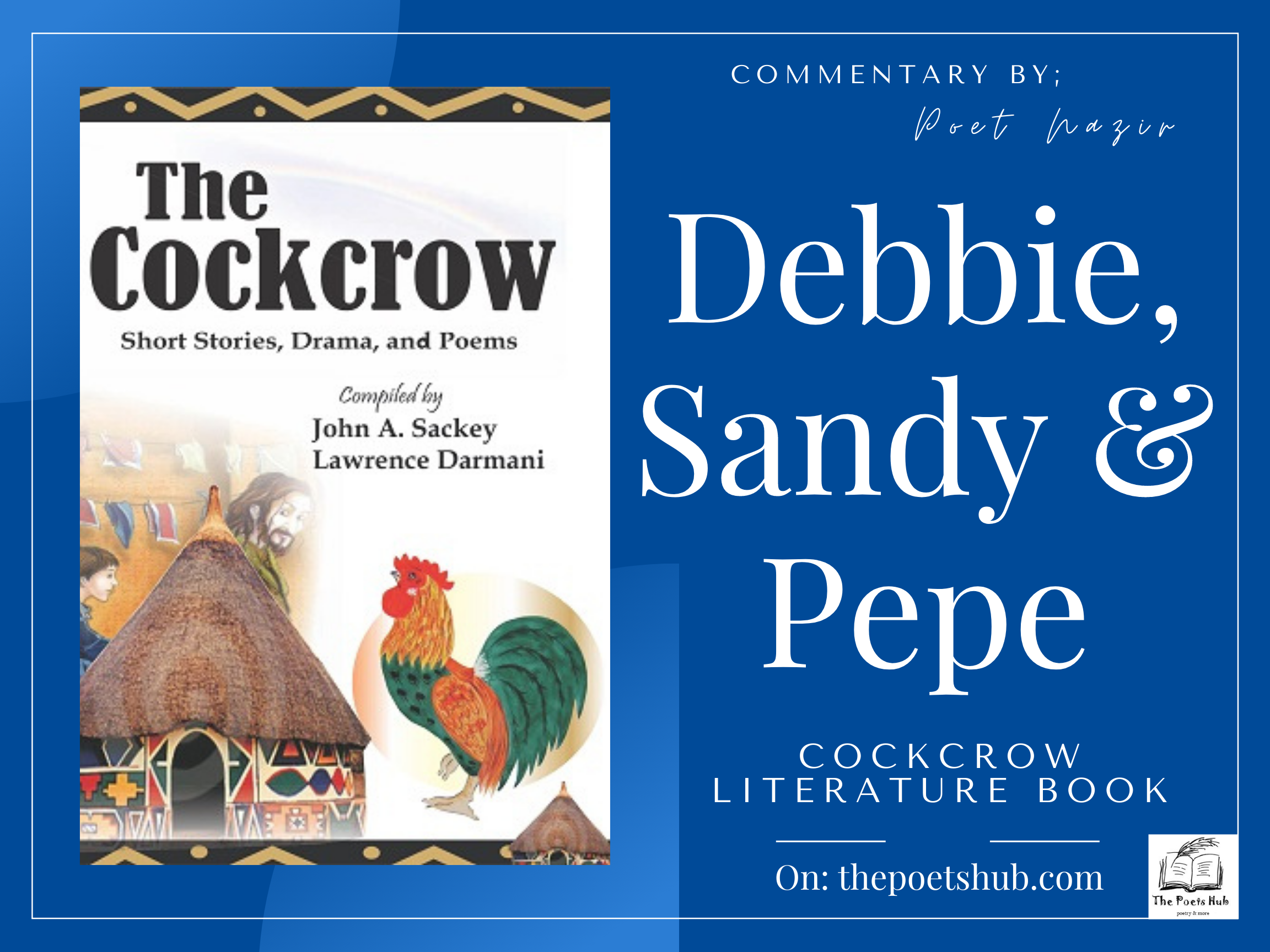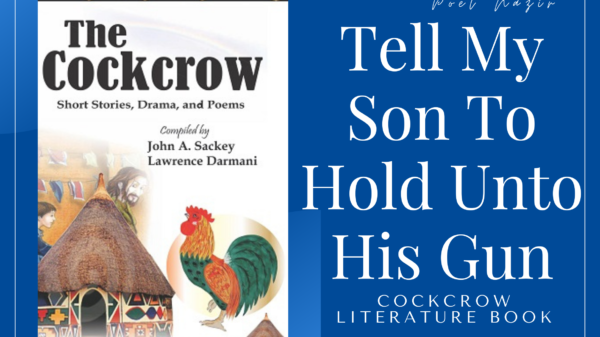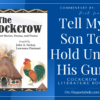This Commentary on The Generous Hunter will serve you with all you need to successfully decipher the short story. It contains the subject matter, literary devices, themes, conflicts etc. on The Generous Hunter Commentary.
Read Also: Cockcrow Commentary: Tell My Son To Hold On To His Gun Detailed Commentary
The Generous Hunter Commentary
The Subject Matter
Asempa, an innocent, hard working and charitable hunter lived in a village called Kekako. He comes to a close community, Bobrapa, to sell his game. His generousity to the people of Bobrapa endears him to the chief, who invites him to live with them in the village. Apart from his good personality, Asempa is skilled in communicating with animals.
Earlier in the wilderness/forest, he confronts a rat and a snake ensared in his traps. The two animals plead with him, and he releases them. As a reward, the snake offersp him a herb that can relieve a person bitten by a snake by mixing it with the blood of a slanderer. A rat comes by and rewards him with a pot of gold. Both rat and snake instruct Asempa not disclose the source of the rewards to anyone unless it’s a matter of life & death.
After sometime, Asempa becomes prosperous and erects a new building. This makes the Gyasehene, who envies him, allied with the palace warden, Kokotako, to frame Asempa. They accuse Aempa of the robbery of some missing gold bars in the palace. With his pledge to the rat and snake, Asempa is unable to reveal the source of his wealth. He is accordingly found guilty and sentenced to death.
On the day of his execution, the princess falls into a coma of a snake bite. Asempa demanded the blood of a slanderer to help in curing the king’s daughter, and he is given that of Kokotako. He mixes it with the herbs shown him by the snake, and the princess cane back to life.
Asempa is freed and offered the princess to marry. He then shares the story of the snake and rat. Kokotako confesses his plot with Gyasehene to frame Asempa. In the end thee two are hanged, and Asempa is made the Gyasehene.
Writer: Kaakyire Akosomo Nyantakyi
Characters In The Generous Hunter
Asempa
Asempa is a kind and generous hunter. He helps the needy and mostly gives his game to people at no cost. He proves to be a trustworthy person by keeping the promise made to his two friends.
The Snake And The Baby Rat
The two are truthful and grateful of Asempa’s kindness. They keep their promise to reward Asempa.
Gyasehene
He is a dangerous and evil man. Despite he having a royal position, he feels compelled by the king’s admiration for Asempa.
Kokotako
He is a palace warden who is greedy and easily deceived. He doesn’t show any sense of loyalty to the throne as he collides with Gyaasehene to frame Asempa.
Odeneho Nyansafo
He is a very kind and thoughtful chief. Through his good administration, there has been peace and order in his community. He loves to see that his people are comfortable and at ease. He is reasonable and patient in his decisions.
Queen Mother of Bobrapa
She is sympathetic and understanding. She believes in Asempa’s innocence and attempts to ascertain her husband to allow him go to the bush alone for the herb. Her wisdom proves to be right.
The Market Square Queen
She is a patriotic citizen of the town. Though she believes in Asempa’s innocence, she is fair in demanding proof of him.
Read Also: Sonnets: Understanding The Various Types, Variations & Schemes
Setting
Bobrapa, a Ghanaian farming community.
Conflict
- Man against nature(External Conflict)
a. The snake and the rat caught in man’s trap.
b. The Princess bitten by a snake.
- Man against man(Internal Conflict)
- Asempa and the Gyasehene(External Conflict)
Themes In The Generous Hunter
- Kindness pays.
- The wicked sometimes fall in their own traps.
Read Also: 20 Basic & Most Important Literary Devices With Examples
Literary Devices In The Generous Hunter
Simile
- “…they lived their lives as if they knew the Ten Commandments that God gave Moses.”
Metaphor
- “…silence suddenly enveloped the entire gathering.”
- “…a drench of shame was all over him.”
Repetition
- “Marry her!” “Marry her!” “Marry her!”
- “Both must hang!” “Both must hang!?”
Irony
- The conclusion is a situational irony where Gyasehene who is the accuser becomes the accused and gets the punishment he planned for Asempa.
Proverb
- “…Odeneho Nyansafo and his Council of Elders cannot allow a common handshake to extend beyond the elbow.”
Oxymoron
- “A loud silence suddenly enveloped the gathering.”
Click To Read Commentary On ‘Debbie, Sandy and Pepe’
Poet Nazir is a writer and an editor here on ThePoetsHub. Outside this space, he works as a poet, screenwriter, author, relationship adviser and a reader. He is also the founder & lead director of PNSP Studios, a film production firm.











